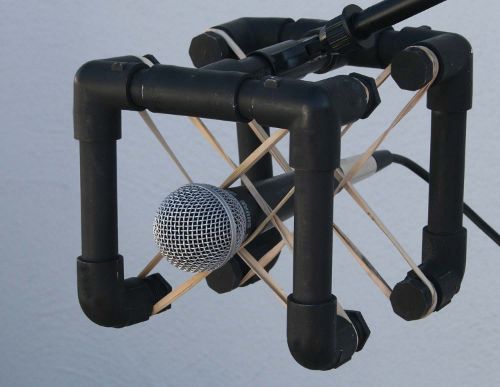Bill, Steve thanks WOW, this was so much educational and really helpful, I am learning so much through your valuable lessons that I could not ever have done all this progress all by myself, even just by studying and restudying the tutorials, thanks for all effort, it really helps a lot!!
OK to answer to your first question if I am speaking like talking to someone on the other side of the room, ??
No, unfortunately I am not talking that loud, because as it is a narration, if I do it like shouting, it sounds really bad and distorted,
but I am talking very loud as loud as I am able to in order to sound natural and clear and continuous at same time and pretty loud!!!
Yes it does help if i turn the Mic volume level (in Audacity) all the way up, but then the noise increases a lot too, I tried doing that and the noise was too much
But I am wondering if the pop filter that I finally got, is kind decreasing the power of the mic in someway?
I have placed the filter very close though, only half inch from the mic and half inch from my mouth ?, and at least is helping to remove all the pops
About how is the Mic positioned:
Yes, it is firmly positioned on the stand, but, now i am thinking, it is in its stand, but---- the stand is placed on a phone book (in order to reach the desired height without me having to bend down and get neck ache) , and the phone book is standing on an additional layer of Styrofoam and — the whole thing is standing on a standard PC table.
So do you think that that all this might be a cause for the humming and noise?
Then about where the laptop is positioned:
yes the laptop is not very close but not that far either
Now I did put the laptop on the carpet this last time, 2 feet from me, and yes, the humming noise was a little better this time, just a tiny less, however. the fan of the laptop is very loud when it gets hot and the mic might still be picking it up in anyway
so the close distance between the mic and laptop might be a key factor then?
Today I am going to test it with the laptop quite far from the mic, and also am going to do a second test from the older PC, which was very quite
About environmental noises, I always choose days when it is pretty quiet around, almost no sound at all, actually no sounds whatsoever, so I do not think that is the problem
So i am going to do this test today, with the laptop far away, and I will try to talk even louder… and I am also going to increase the volume slider of the mic just 1 mm, thats all and will see if the noise will be less (after amplifying and then doing the noise removal)
In the mean time,
- would you be so kind to do maybe some research on how to build this spider for the mic you were talking about? I wonder though how can I speak through the END of the mic, if the mic is hanging down from the ceiling?
2)Then. would you mind to tell me in poor terms what the following step you mentions mean and how I would need to accomplish it?:
“If the voice recording was then going to be mixed with a background (music), then the “silences” between words could be gated (after noise removal)”
Because yes, I am going to mix it with music so i wonder what “gating the silence between words” means—and if it would further help the quality of the recording if I apply it now?
or shall I re-place this question for you, later at a later time when that steps of mixing with music comes?
thank you all now, I appreciate it
Anna
PS
ooops… i forgot to ask:
Do those parameters about Amplify (19.2 dB) and 15 - 00- 150–.15 for the noise removal that you have suggested in your previous post, APPLY to all other recordings I am going to do? Or do i have to change those each time??? because I noticed that , while the Noise removal" figures you gave me work well with any recording, on the other hand, when i talk louder, and then apply the Amplify,I cannot reach the 19.2 dB any longer, the default does not reach even 5 or 4 dB sometimes, before the OK button becomes inactive, so cannot be applied, so should I change that from time to time?
thanx
